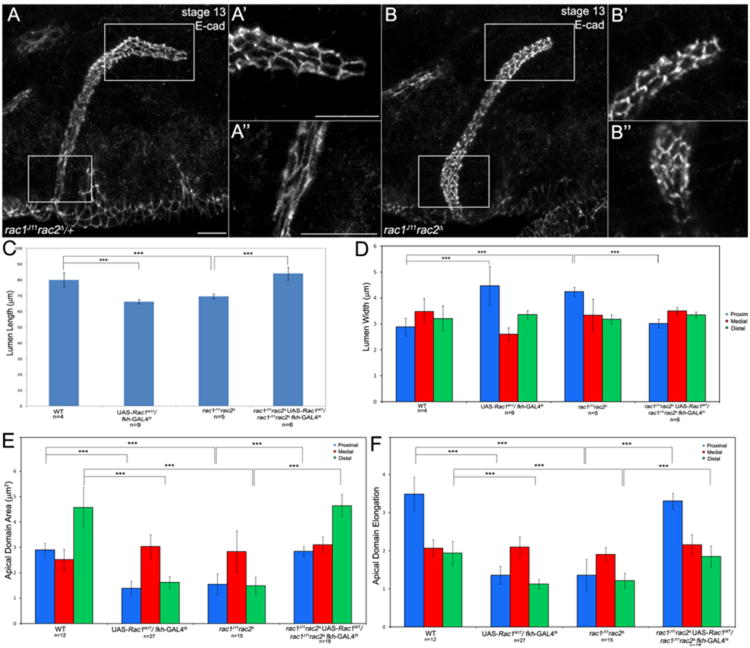Fig. 4.
Rac GTPases control salivary gland lumen length and width. Salivary glands of rac1J11rac2Δ heterozygous (A) and homozygous (B) embryos showing apical domains in the distal gland (A′ and B′) and in the proximal gland (A″ and B″). Graphs show measurements of salivary gland lumen length (C), lumen width (D), apical domain area (E) and apical domain elongation (E) in wild-type salivary glands, Rac1N17-expressing glands, rac1J11rac2Δ mutant glands and rac1J11rac2Δ mutant glands expressing wild-type Rac1, ***=p<0.001. Embryos in A and B were stained for E-cad (white) and β-gal (not shown) to distinguish heterozygous from homozygous siblings. Scale bar represents 10 μm.

